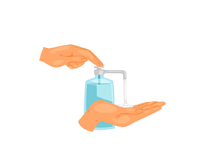Doxapram
Doxapram is a respiratory stimulant used to treat acute respiratory depression and stimulate breathing in patients experiencing conditions like drug overdose, anesthesia, or respiratory failure. It works by stimulating the brain’s respiratory centers, increasing the rate and depth of breathing. Doxapram is administered intravenously or subcutaneously and is typically used in hospital settings under medical supervision. It is essential in managing conditions where normal respiratory function is impaired and can help to restore adequate oxygen levels in the body.
Uses of Doxapram
- Treats respiratory depression caused by drug overdose or anesthesia
- Used in cases of acute respiratory failure
- Stimulates breathing in patients with impaired respiratory function
- Helps to maintain adequate oxygen levels in the body
How Doxapram Works
Doxapram works by stimulating the chemoreceptors in the brainstem, which are responsible for regulating breathing. By enhancing the sensitivity of these receptors to carbon dioxide levels in the blood, Doxapram increases the rate and depth of respiration, improving oxygen intake and carbon dioxide removal. This mechanism helps patients recover from respiratory depression and maintain proper lung function in critical situations.
Benefits of Doxapram
- Effective in reversing respiratory depression caused by drugs or anesthesia
- Helps stimulate normal breathing in patients with respiratory failure
- Restores adequate oxygen levels in the body
- Can be used in emergency situations to improve respiratory function
How to Take Doxapram
Doxapram is typically administered intravenously (IV) or subcutaneously by a healthcare provider, usually in a hospital setting. The dosage and duration of treatment depend on the patient's condition and response to the medication. It is essential that Doxapram is given under the supervision of a medical professional to ensure proper monitoring of respiratory function and avoid potential side effects. It is not recommended for use at home or without medical supervision.
Type of Dosage Available
- Intravenous (IV) Injection
- Subcutaneous Injection
Side Effects of Doxapram
- Restlessness or agitation
- Headaches or dizziness
- Elevated blood pressure
- Rapid heartbeat (tachycardia)
- Potential for seizures in rare cases
- Injection site reactions, such as pain or redness
Safety Advice
- Doxapram should only be administered under medical supervision, typically in a hospital setting
- Monitor vital signs and respiratory function during treatment
- Use with caution in patients with a history of seizures or cardiovascular issues
- Pregnant or breastfeeding women should consult their doctor before using Doxapram
- Inform your doctor of any other medications you are taking, as Doxapram may interact with certain drugs
Frequently Asked Questions (FAQs)
Q. What is Doxapram used for?
A. Doxapram is used to treat respiratory depression caused by conditions like drug overdose, anesthesia, or respiratory failure. It stimulates the breathing centers in the brain to help restore normal breathing.
Q. How is Doxapram administered?
A. Doxapram is administered intravenously (IV) or subcutaneously by a healthcare professional. It is typically given in a hospital setting to monitor the patient's response to treatment.
Q. Can Doxapram cause side effects?
A. Yes, side effects of Doxapram may include restlessness, headaches, elevated blood pressure, rapid heartbeat, and in rare cases, seizures. It can also cause pain or redness at the injection site.
Q. Is Doxapram safe for use during pregnancy?
A. Doxapram should be used during pregnancy only if the benefits outweigh the risks. Consult your doctor before using Doxapram if you are pregnant or breastfeeding.
Q. Can Doxapram be used at home?
A. No, Doxapram should only be administered in a hospital setting under the supervision of a healthcare provider due to the need for monitoring vital signs and respiratory function.
Download India's most affordable pharmacy app
- Compare with medicine prices
- Save upto 90% on your medicine bills

Temperature Controlled storage and delivery

Regular Sanitization

Disinfected Packaging














 Added!
Added!